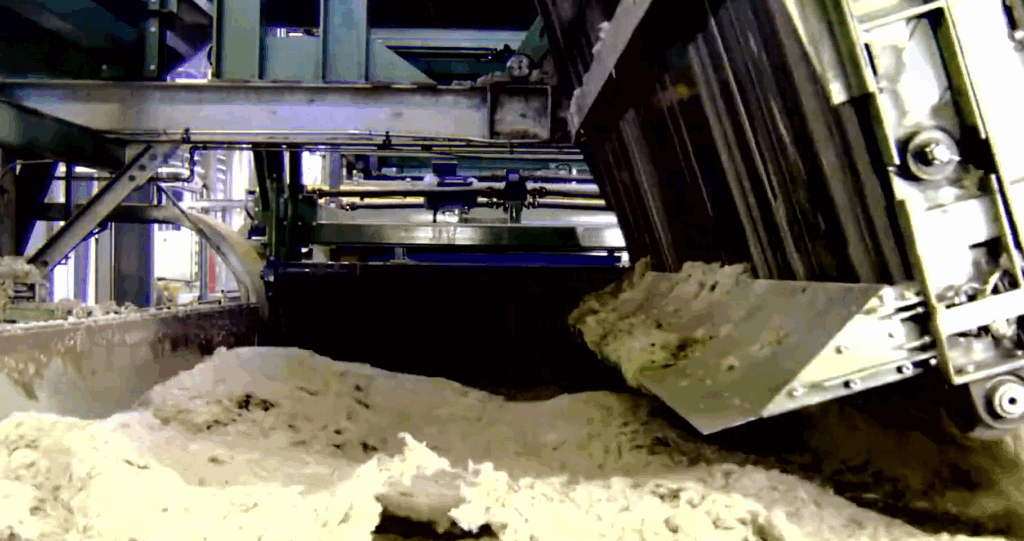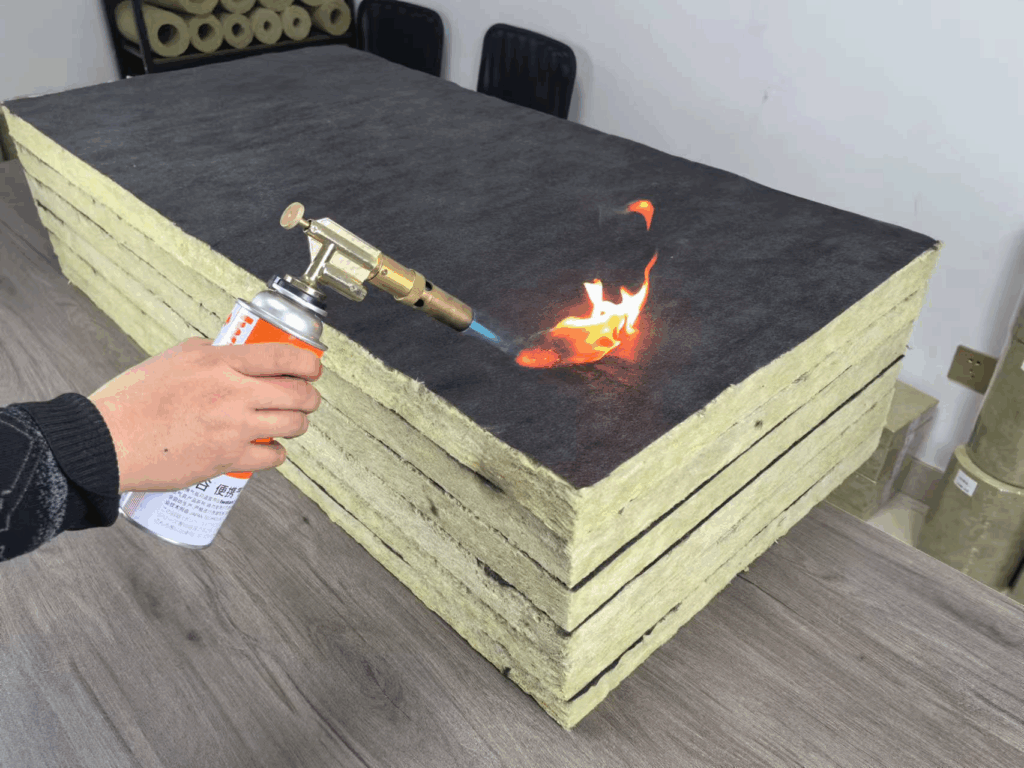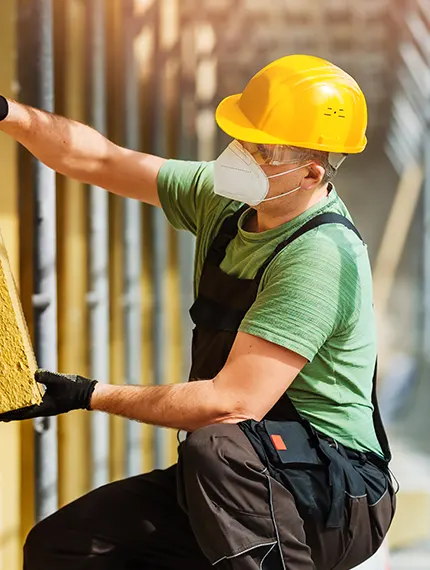Elegir el aislamiento adecuado es más que simplemente elegir un material: se trata de seguridad, comodidad, y eficiencia a largo plazo. Los aislamientos de lana de roca y lana mineral a menudo son objeto de debate por su desempeño en aplicaciones caseras y proyectos comerciales. Si bien ambos materiales brindan excelentes beneficios térmicos y acústicos, diferencias sutiles pueden hacer que uno se adapte mejor a sus necesidades específicas.
En esta guía, desglosaremos sus propiedades, ventajas, desventajas, y consideraciones prácticas para ayudarle a tomar una decisión informada.
| Característica | Lana de roca (Lana de roca) | Lana Mineral (Categoría general) |
| Materia prima | Hecho de roca volcánica como el basalto. | Incluye lana de roca y lana de escoria. (subproducto) |
| Resistencia al fuego | Extremadamente alto (>1,000°C), excelente seguridad | Resistente al fuego, pero varía según el tipo |
| Eficiencia térmica | Alto valor R, muy estable a temperaturas extremas | Buen aislamiento, un poco menos que la lana de roca |
| Aislamiento acústico | Superior debido a una mayor densidad | Eficaz, pero no tan fuerte como la lana de roca |
| Costo | mas caro, materiales de primera calidad | Más asequible, especialmente mezclas de lana de escoria |
| Mejores casos de uso | Industrial, rascacielos, y proyectos resistentes al fuego | Aplicaciones residenciales y comerciales generales. |
¿De qué está hecha la lana mineral??

Comprender de qué está hecha la lana mineral es fundamental antes de compararla con la lana de roca.
- Composición
La lana mineral se crea a partir de rocas naturales como el basalto o la diabasa y subproductos industriales como la escoria de alto horno..
Los materiales se funden a temperaturas extremadamente altas y se hilan en fibras finas.. Estas fibras luego se comprimen en tablas., bates, o aislamiento de relleno suelto.
- Papel de los fabricantes de lana mineral
Confiable fabricantes de lana mineral asegurar una densidad de fibra constante, eficiencia térmica, y propiedades resistentes al fuego.
- Variaciones
La lana mineral engloba tanto la lana de roca (de roca volcánica) y lana de escoria (de subproductos del horno), cada uno con características de rendimiento ligeramente diferentes.
Ventajas del aislamiento de lana mineral

La lana mineral tiene varios beneficios convincentes que la convierten en la mejor opción para proyectos de construcción.:
- Resistencia al fuego – Naturalmente no combustible y capaz de soportar altas temperaturas sin liberar humos tóxicos..
- Insonorización – Las fibras densas absorben las ondas sonoras., haciéndolo ideal para paredes, pisos, y techos donde la reducción del ruido es importante.
- Aislamiento térmico – Proporciona una regulación de temperatura confiable, ayudando a reducir los costos de energía en climas fríos y cálidos.
- Durabilidad – Resistente a plagas, moho, y decadencia, garantizando un rendimiento a largo plazo incluso en condiciones difíciles.
- Ventajas medioambientales – A menudo contiene materiales reciclados., Reducir la huella de carbono en comparación con otros tipos de aislamiento..
¿Cuáles son las desventajas de la lana mineral??
A pesar de sus beneficios, El aislamiento de lana mineral tiene algunas limitaciones.:
- Costo – Generalmente más caro que la fibra de vidrio., haciendo que la instalación inicial sea más costosa.
- Peso – Más denso que la fibra de vidrio, lo que puede hacer que el manejo y la instalación requieran más mano de obra.
- Irritación de la piel y los ojos. – Las fibras pueden causar picazón o sarpullido al contacto.; Se recomienda equipo de protección..
- Impacto ambiental – La fabricación a alta temperatura consume una cantidad significativa de energía., contribuyendo a las preocupaciones medioambientales.
- Tolerancia limitada a la humedad – Aunque resistente al moho, la exposición excesiva al agua puede reducir temporalmente su eficacia de aislamiento.
¿Qué pasa si la lana mineral se moja??

La humedad puede afectar la eficiencia del aislamiento., por lo que comprender su comportamiento es importante:
- Resistencia al agua – La lana mineral repele el agua hasta cierto punto., pero la saturación puede reducir su rendimiento térmico..
- Secado y recuperación – Una vez seco correctamente, recupera la mayoría de sus propiedades aislantes.
- Resistencia al moho – A diferencia del aislamiento orgánico, no proporciona un caldo de cultivo para el moho, incluso si está mojado.
- Consejos de instalación – Utilizar barreras de vapor o impermeabilizantes en zonas propensas a la humedad., como sótanos o paredes exteriores.
Lana mineral vs fibra de vidrio: Que es mejor?

Lana de piedra vs lana mineral: Diferencias clave
Aunque técnicamente la lana de roca es un tipo de lana mineral, hay distinciones que vale la pena señalar:
- Lana de roca – Hecho de roca volcánica como el basalto.; más denso, más resistente al fuego, y excelente para el aislamiento acústico.
- Lana Mineral – Categoría más amplia que incluye lana de roca y lana de escoria.; ligeramente más claro, versátil, y rentable.
- Consideración del desempeño – Para máxima protección contra incendios y sonido., la lana de roca es superior; para necesidades generales de aislamiento, otros tipos de lana mineral son suficientes.
Muchos propietarios y constructores preguntan si aislamiento de lana mineral o fibra de vidrio es superior:
- Eficiencia térmica – La lana mineral suele tener un valor R por pulgada más alto, proporcionando un mejor aislamiento térmico.
- Comportamiento ante el fuego – La lana mineral puede soportar temperaturas más altas que la fibra de vidrio., ofreciendo una protección contra incendios superior.
- Propiedades acústicas – Las fibras de lana mineral más densas reducen el ruido mejor que los bloques de fibra de vidrio..
- Costo y facilidad – La fibra de vidrio es más asequible y más fácil de cortar e instalar..
La lana mineral es ideal para aplicaciones de alto rendimiento que requieren seguridad contra incendios e insonorización., mientras que la fibra de vidrio se adapta a proyectos con presupuesto limitado donde la facilidad de instalación es clave.
¿Qué pasa si tocas lana mineral??
La manipulación de lana mineral requiere cuidado debido a su naturaleza fibrosa.:
- Irritación de la piel – Puede causar picazón o erupciones leves.; Se recomiendan guantes y mangas largas..
- Irritación de los ojos – Las fibras sueltas pueden irritar los ojos si se transportan por el aire.; Las gafas de seguridad ayudan a prevenir la exposición..
- Protección respiratoria – La inhalación de polvo puede provocar tos o irritación de garganta.; use una máscara al cortar o instalar.
- Consejos para un manejo seguro – Siga siempre las pautas del fabricante proporcionadas por los fabricantes de lana mineral para minimizar los riesgos..
Conclusión
Al comparar lana de roca con lana mineral, la mejor opción depende de tus necesidades. La lana de roca ofrece un rendimiento superior en resistencia al fuego e insonorización, mientras que la lana mineral en general proporciona una versatilidad, solución confiable.
Si está buscando materiales, Siempre consulte con fabricantes acreditados de lana mineral para garantizar la calidad del producto.. Para un rendimiento a largo plazo, La instalación adecuada y la protección contra la humedad son tan importantes como la propia elección del aislamiento..
Encuentra lo correcto lana de roca, lana de vidrio y aislamiento de fibra cerámica para tu proyecto. Ya sea que necesite productos estándar o soluciones de aislamiento personalizadas, RPower está listo para apoyarlo con una calidad confiable, entrega rápida, y servicio profesional. No te lo pierdas!

















